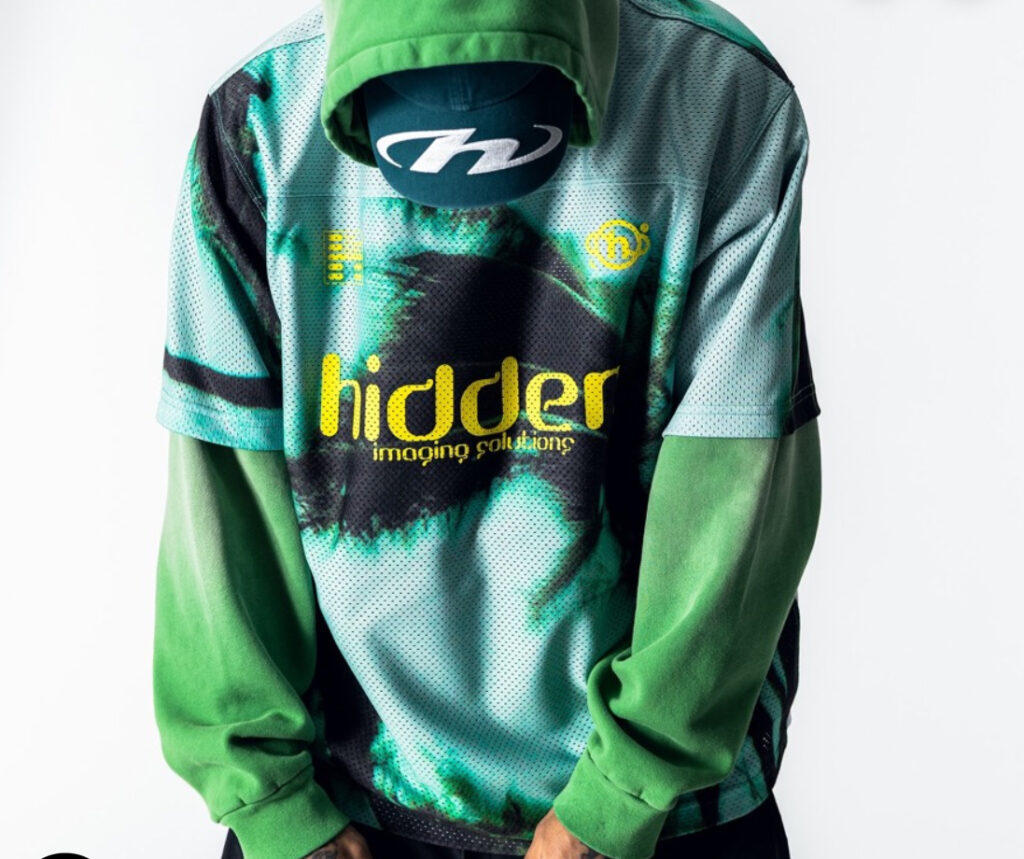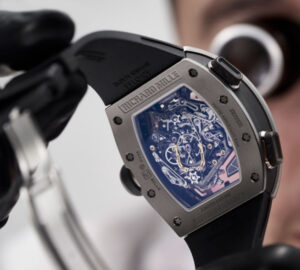


There are clothes that debut with a runway show and a press release, and there are clothes that simply appear—without fanfare, without formal announcement, without explanation. “Today’s hidden drop” has become a shorthand within certain corners of fashion culture: the quiet debut of a garment or capsule, often with roots in community-specific aesthetics or archival homage, that gains traction not because it shouts but because it resonates. In an era when consumer fatigue shadows every overproduced collaboration and orchestrated launch, these drops—mysterious, coded, and often of limited provenance—serve as both antidote and cipher.
The phrase itself has become ubiquitous on social media platforms and Discord servers, scrawled beneath grainy mirror selfies and storefront leaks, or attached to a glimpse of something that wasn’t there the day before. In this twilight economy of subtlety and scarcity, brands like Avirex, PPF, and a resurgence of independent or one-season-only design labels have reoriented the rules of engagement for how drops are done. These collections don’t depend on the metrics of virality—they depend on mythos. And the more buried the signal, the stronger the cult around it becomes.
Code of Silence: Where the Drop Begins
To understand the cultural current that fuels today’s hidden drops, one must trace it back to the principles of 2000s-era streetwear and earlier, when labels like Supreme, BAPE, or even Hysteric Glamour relied not on mass exposure but selective diffusion. The more cryptic the release, the more coveted it became. The streetwear logic of obscurity = value has only intensified in the 2020s, where the attention economy is oversaturated and the loudest campaign often leaves the shallowest impression.
Within that landscape, PPF (an enigmatic New York-based clothing imprint, often conflated with or operating adjacent to the circle around Playboi Carti’s Opium label) has cultivated a reputation for ghostly appearances—t-shirts bearing abstract linework, militaristic cuts, or washed-out iconography sold out of pop-up trunks, or briefly listed on Shopify portals that vanish within hours. No press photos. No interviews. Just a pulse, and then absence.
Such tactics aren’t accidental. This is fashion recoded as experience—scarcity as story, object as relic. The aesthetics often borrow from Cold War military, DIY punk, and 1990s dystopian techwear, refracted through a post-Tumblr, post-Hypebeast lens. In a strange way, it mirrors the urgency of punk zines or vinyl bootlegs: made for the few, not the many, and never truly meant to last.
Avirex: Ghosts in the Flight Jacket
If PPF represents the bleeding edge of post-digital underground fashion, Avirex is its spiritual predecessor—an icon of American aviation design resurrected and reimagined through cycles of nostalgia. Founded in 1975 and originally rooted in military outerwear, Avirex’s signature leather jackets became synonymous with early hip-hop style, donned by everyone from Nas to Dipset. After dipping into obscurity through the 2010s, the label has undergone a quiet but potent revival—powered not by corporate rebranding, but through targeted collabs, regional activations, and, most crucially, its appeal to a generation hungry for authentic relics.
Today’s Avirex isn’t just nostalgia-farming; it’s adapting. Recent capsules have embedded themselves into club scenes in Paris, drill music videos from the UK, and Instagram editorials that blend ‘90s braggadocio with surrealist image treatment. The brand’s ongoing relationship with designers like Bloody Osiris, or collectives such as Corteiz and GR10K, highlights a broader phenomenon: heritage labels finding renewed oxygen in today’s stealth-first fashion landscape.
What links Avirex to the new wave isn’t merely the product—it’s the placement. You won’t find these pieces at your average department store. They surface through drops that seem to materialize out of nowhere, often sold through insider channels, niche boutiques, or cryptically posted links. In a sense, Avirex has become a kind of cipher—a stand-in for coded knowledge and stylistic authority.
The Rise of Stealthwear and Symbolic Minimalism
The aesthetics of today’s hidden drops often evade spectacle. Instead of maximal branding or overt references, many pieces lean toward symbolic minimalism: sigil-like graphics, tonal palettes, heavy cottons and nylons, or cryptically embroidered slogans that only the “in” crowd can decipher. These garments don’t sell you a lifestyle—they assume you’re already living it.
This is where the idea of stealthwear emerges—not just in design (military cuts, tactical elements, hidden pockets, velcro fastenings) but in deployment. Clothes aren’t “released,” they’re deployed—as if parachuted into the right hands. And the people wearing them become part of the distribution system. In one sense, this mimics the way bootleg culture always worked: fashion moving faster than media, passed hand-to-hand and post-to-post, instead of top-down through institutional gatekeepers.
A common thread across hidden drops is the prioritization of feel over fit. Whether it’s the sand-washed texture of a reconstructed hoodie, the exaggerated silhouette of drop-shoulder jackets, or the density of heavyweight jersey, the experience is tactile. The physicality of the garment becomes proof of its meaning, often in lieu of explanation.
Drops as Ritual, Not Release
Today’s fashion cycles have been so thoroughly commercialized that the calendar itself has become meaningless—pre-fall, cruise, resort, etc., all blur into continuous digital churn. Hidden drops resist that logic entirely. They reintroduce the notion of the drop as ritual. A limited capsule might only last one night, accessible through a password-protected site or DM-exclusive sale. Others might only be obtainable by showing up in person—often with no prior notice.
This is particularly evident in the operations of micro-collectives working out of Atlanta, Detroit, or Tokyo—often operating without formal brand names, offering screen-printed one-offs, upcycled MA-1 jackets, or hand-dyed sweats via temporary storefronts or underground flea markets. The marketing is ambient: you see someone wearing it, and you do the digging.
Importantly, these rituals often blur the line between audience and artist. The person selling you the garment might also be the one who stitched it, or who DJs your set later that night. This intimacy lends every drop an aura of performance art: participatory, ephemeral, and irreproducible.
Digital Echoes, Analog Souls
Despite their analog feel, today’s hidden drops often rely on digital signals—just not the loud ones. Instead of a TikTok campaign or algorithm-chasing reel, the clues are embedded in Instagram stories, Telegram threads, and shadowy subreddits. A screengrab from a group chat. A hint in a music video. A closeup in a low-res fashion zine PDF passed through Dropbox.
In this way, hidden drops embody the post-algorithm aesthetic: rejecting visibility for resonance. They cultivate small but committed followings, and function more like encrypted transmissions than marketing campaigns. The goal isn’t reach—it’s connection.
The cultural capital of these pieces lies in their trace. When someone wears a piece from an unlisted PPF drop or a cryptic Avirex x underground artist collab, the real flex isn’t the item—it’s the story of how they got it. The authentication is social, not transactional.
Legacy, Loops, and Anti-Hype
There’s a paradox at the heart of the hidden drop: while it rejects traditional hype culture, it also thrives on insider exclusivity—a different kind of hype. But the stakes are different. Where conventional streetwear hype trains rely on resale bots, celebrity co-signs, and app-integrated countdowns, the hidden drop survives on whisper networks and tactile connection.
Still, these scenes are not immune to commodification. As more people tune into the rhythm of hidden drops, brands once operating beneath the radar begin to professionalize. What starts as a backroom screenprint op can morph into a cult luxury label in months—just ask brands like ERL or Syna World. The challenge, then, becomes sustaining the ethos of the underground while adapting to inevitable attention.
Some succeed by embedding the logic of anti-hype into the business model—never restocking, refusing wholesale, limiting online presence. Others fold under the weight of their own myth, unable to maintain the aesthetic illusion of scarcity when real demand hits. In this sense, the hidden drop is both blueprint and cautionary tale.
Toward a New Fashion Conscience
Ultimately, today’s hidden drops represent more than just a style or sales model. They offer a blueprint for reimagining how fashion can operate in a fractured, overexposed world. They speak to a generation disillusioned with overproduction and surveillance commerce. To wear a garment from such a drop is to participate in a miniature resistance—against noise, against massification, and against the loss of fashion’s magic.
Whether it’s PPF’s moody silhouettes, Avirex’s vintage armor, or a nameless cotton tee picked up in an East London squat, these clothes matter not because they trend, but because they persist. They represent a future where fashion returns to being a form of dialogue—coded, layered, and alive with possibility.
And if you missed today’s hidden drop? That’s okay. There’s always tomorrow. But you’ll have to look harder.
No comments yet.








